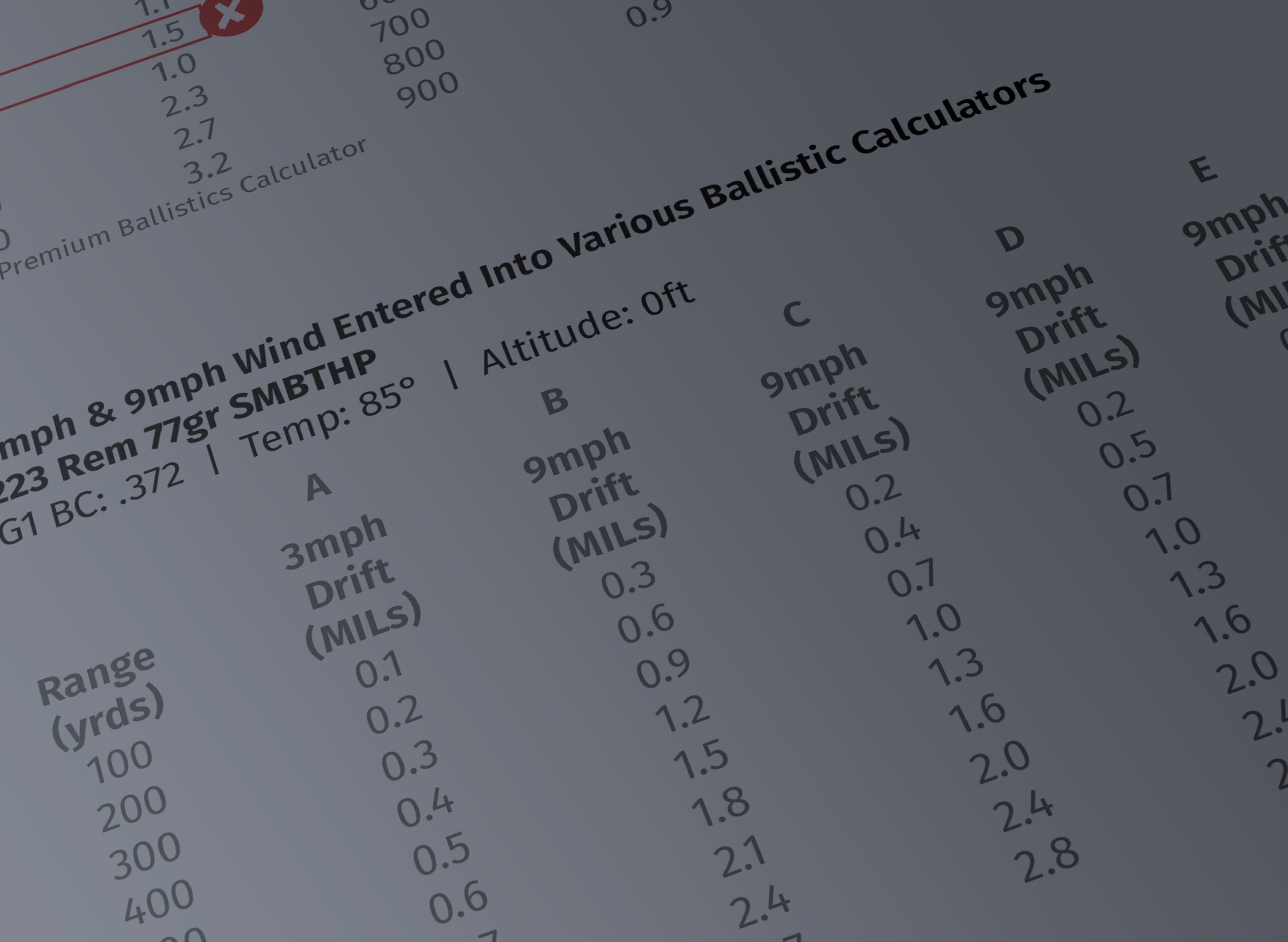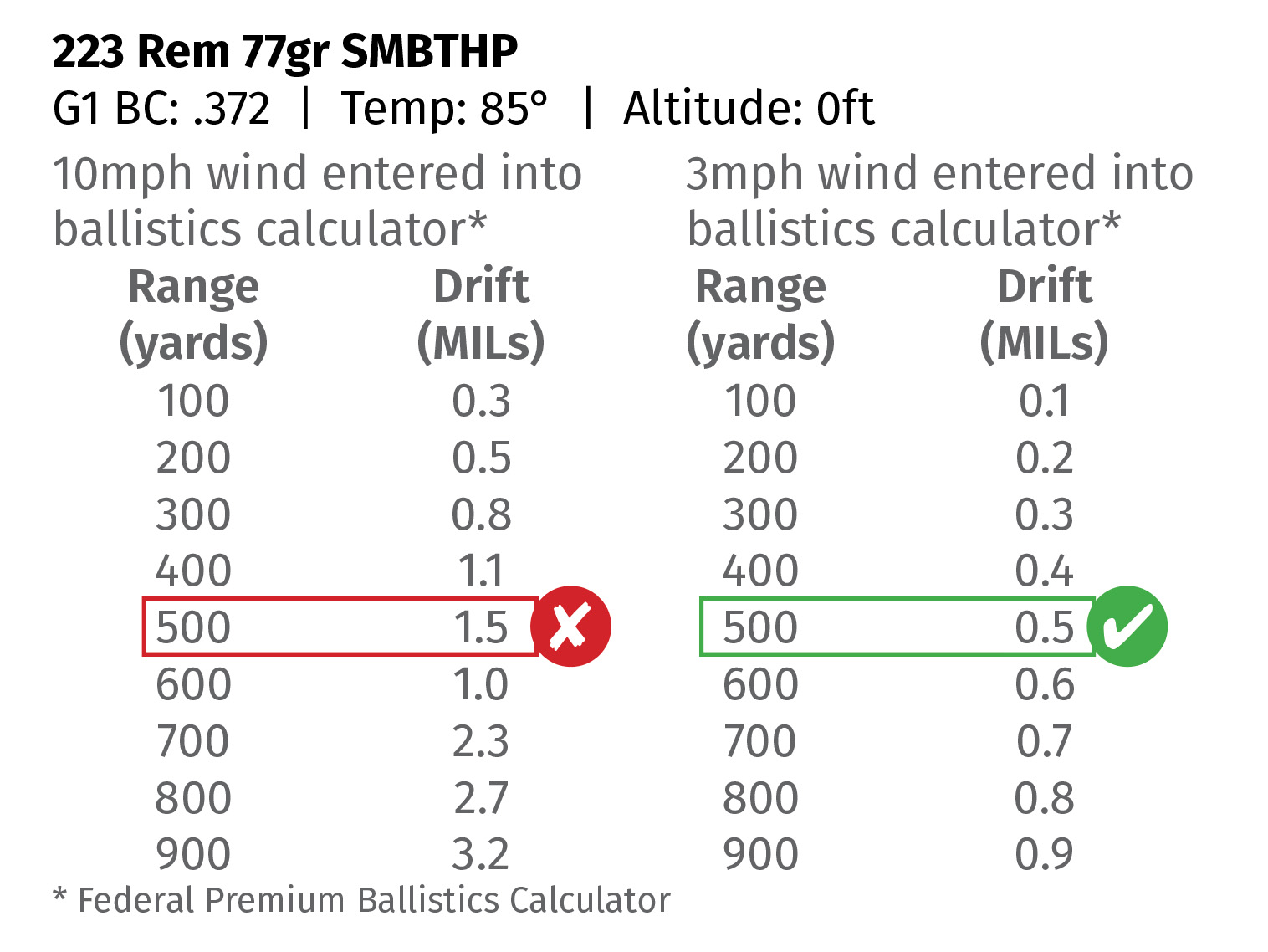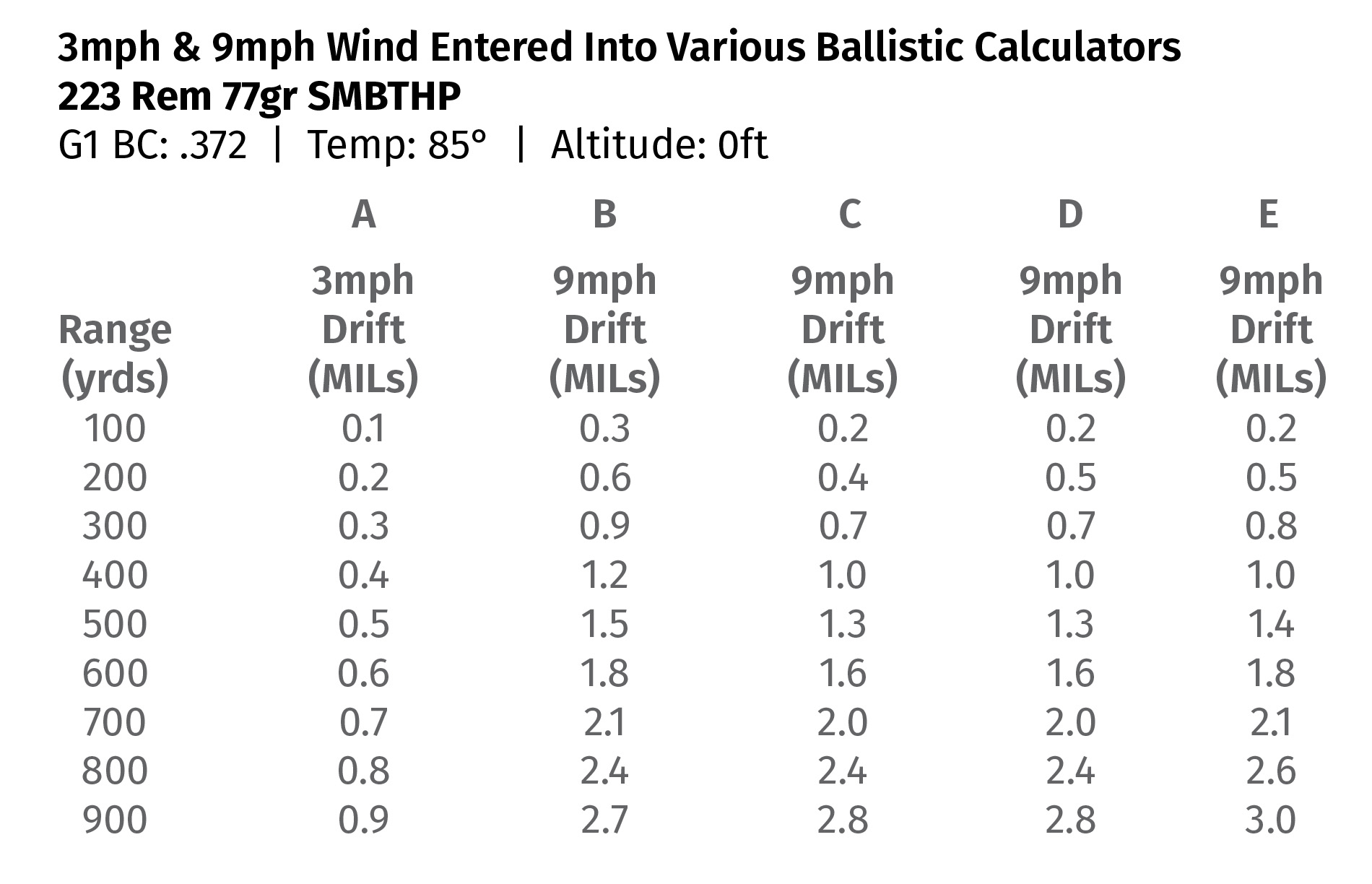
Wind Calls: What is Your Gun Speed?
- 360 Precision
- Insights
- Insights
- Wind Calls: What is Your Gun Speed?
Until we get to ranges beyond 1,000 yards, the basics of determining elevation are pretty simple. Combine muzzle velocity (MV), ballistics coefficient (BC) and density altitude (DA) into an algorithm and determining the bullet’s point of impact becomes pretty academic and fairly precise. Wind is the wild card.
Wind. We can apply some basic rules to judging wind but we all know this is nothing more than educated guessing. Wind can change at various times and at various distances all along the bullet’s flight path making wind calls an imprecise equation on all but the calmest of days. Yet we still try to apply the precise calculations of elevation to wind despite the imprecision of it all. What results are complicated dope cards with various holds at various wind speeds that must be referenced between shots of varying distances.
Is there a way to simplify this information while keeping as much precision as possible in an already imprecise process? Fortunately, there is a way to change how we look at the dope for a particular round that will result in information that most of us can keep in memory. This new process will be most helpful on timed stages because you won’t have to take your eyes off glass to consult a ballistics table since your wind holds will be memorized. Read on to learn how this can be done.
Determining your rifle’s MPH.
The first step in this process is to determine the MPH of your rifle, or more correctly, the MPH of the round you intend to shoot from your rifle. (Yes, MPH does stand for miles-per-hour and in this context, miles-per-hour refers to wind speed) To complete this, we will enter various wind speeds into a ballistics calculator until we get roughly one tenth of a MIL wind hold for every 100 yards.
Stated another way, we are determining how much wind will force the round to land .1 MIL from point of aim per 100 yards. So working with the desired load, begin entering different wind speeds into a ballistics calculator until you reach 0.1 MILs of drift per 100 yards.

Caption: Using 500 yards as an example, entering a wind speed of 10mph into the ballistics calculator results in a 1.5mil hold at 500. However, entering a wind speed of 3mph results in a .5mil hold at 500 yards, and this is the result we are looking for. As you can see, that same 0.1 MIL hold per 100 yards holds true out to 900 yards for this particular round.
With certain loads, this formula will break by a tenth of a mil after a certain distance, but will remain close enough to keep you on a 1 moa target at most commonly encountered ranges for that particular load.
Making Wind Calls from Memory
With the information from the table above we know that the rifle firing the load used to create the table is a 3mph gun. We can now use this information to make quick wind hold adjustments from memory:
Example 1: A target at 400 yards in a full-value 3mph wind will need a 0.4mil hold. If the wind is that same full-value at 9mph, we can quickly triple the hold (as the wind speed itself has tripled) to 1.2mils.
Example 2: Using the same target distance of 400 yards, but assuming that same 9mph wind at a 75% value and we use 75% value of the hold, or 0.9mils.
Checking the Math
As with all dope, it is best to confirm the information by actually sending rounds down range and verifying the point of impact. However, again considering the inconsistencies of wind, this process is still incorporating some imprecision. In lieu of verifying actual rounds downrange in actual wind, we’ve entered our new calculations into multiple ballistics calculators to determine how close our simplified wind call technique fairs against the information provided by those calculators.

Column A: 3mph wind entered in the calculator resulting in a 0.1MIL hold per 100 yards
Column B: Wind call based on quick calculations considering a 9mph wind using the new technique
Column C: Wind call based on Federal Premium Ballistics Calculator considering a 9mph wind
Column D: Wind call based on Hornady’s Ballistics Calculator considering a 9mph wind
Column E: Wind call based on Berger’s Ballistics Calculator considering a 9mph wind
As we can see in the table above, the various ballistics calculators remain within 0.1–0.2 MILs for most distances out to 900 yards for this round. All else considered, the error still keeps you on a 1MOA target at 600 yards, and it’s done all in your head without having to come off glass to read a dope chart. Again, this technique is most useful on timed stages where targets are presented at various distances and the time saved by not having to stop to reference a complicated dope chart might result in additional time to send rounds downrange.
One additional advantage to using this technique is when communicating wind calls between two shooters in team events. As is most often the case, two shooters in a team event may be shooting two different calibers with two different ballistics. The first shooter may be getting impacts while holding 1.0MILs but that information may not be useful to their teammate that may only have to hold 0.4MILs to get impacts at that same distance. However, if the first shooter states that they are getting impacts while using a 5mph wind, that information is immediately useful to the second shooter.
In conclusion, we hope the ability to quickly determine a wind call without having to refer to a ballistics table mid-stage will provide shooters with more time to get accurate rounds downrange. So run some math and try this technique on your next range day!
